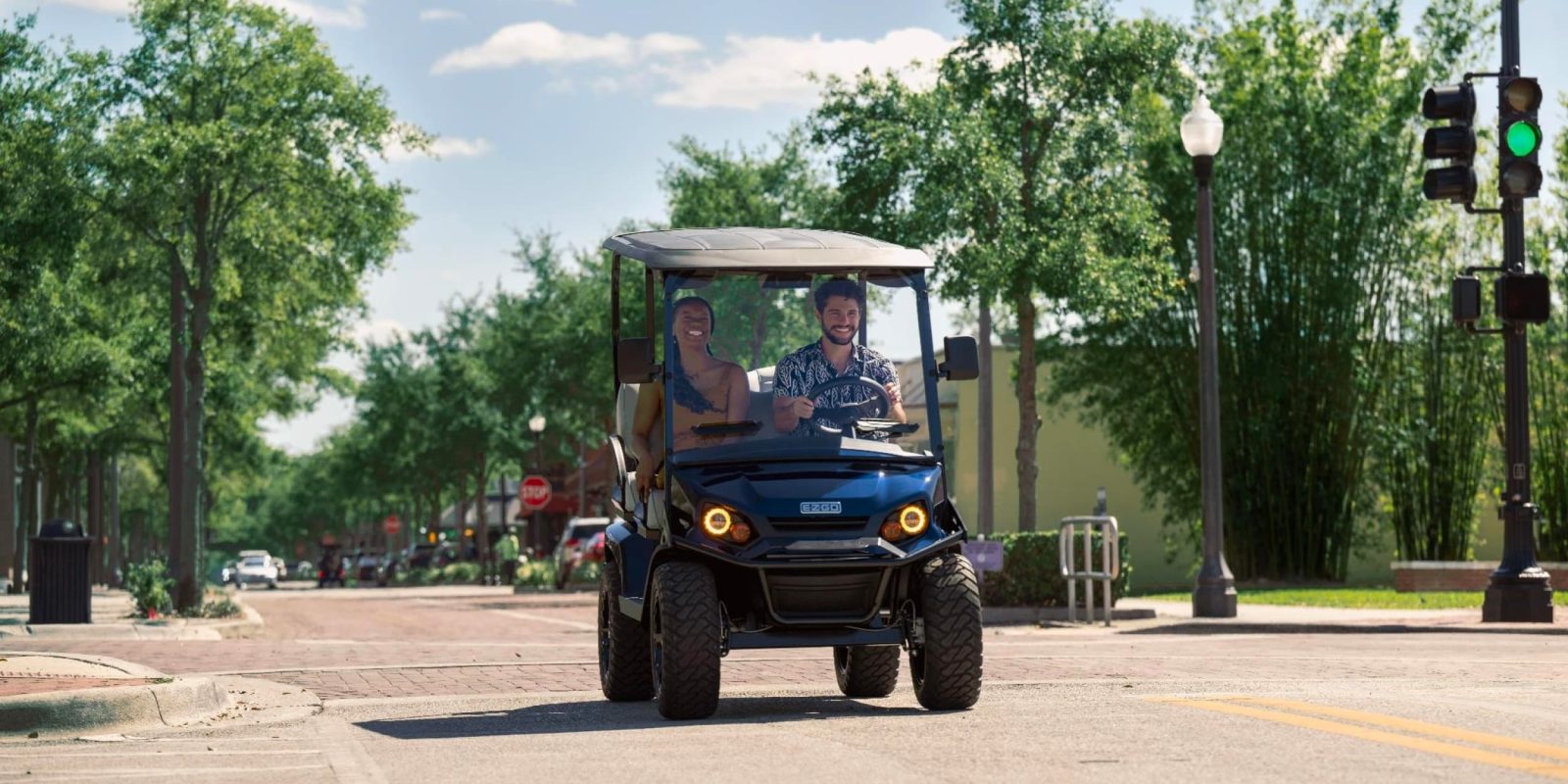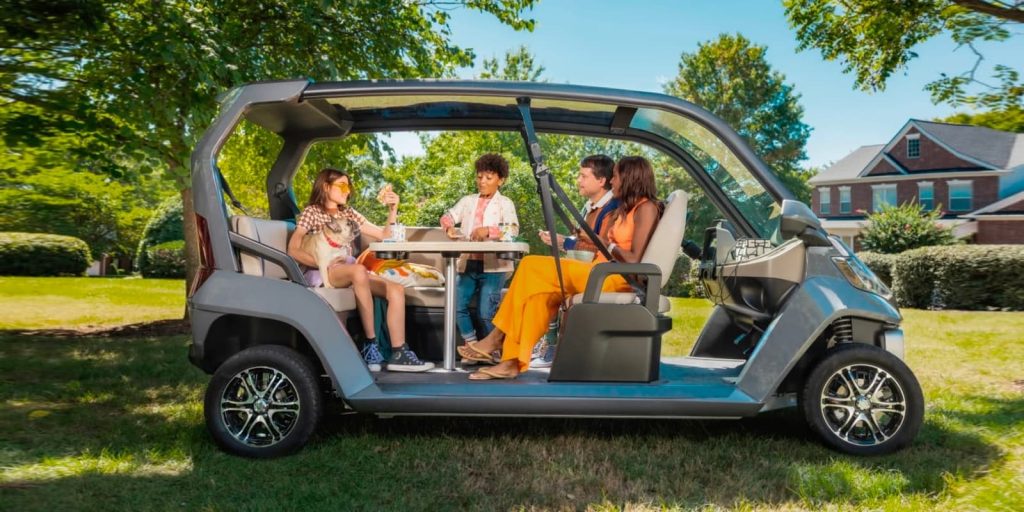Believe it or not, golf carts are now replacing cars. Here’s why


In recent years, a surprising trend has begun gaining momentum across the US: Golf carts are being increasingly adopted as primary modes of transportation in communities, beach towns, and other areas. The traditional image of golf carts as mere mobility aides for silver-haired retirees to traverse the greens is shifting rapidly. If you’re skeptical, I can’t blame you. But the times are changing, so let’s dive deeper into why golf carts are making excellent car replacements for so many people.
Embracing the simplicity and efficiency of golf carts
For starters, golf carts are the epitome of simplicity and efficiency when it comes to four-wheeled electric vehicles. They are designed to move people around and little more. Forget the heated seats or the infotainment systems (though to be fair you’ll find high-end golf carts with those features, too).
These mobility buggies are compact, easy to operate, and consume significantly less power compared to conventional cars. That makes them an ideal choice for short, regular commutes such as neighborhood errands or trips to nearby recreational spots.
Moreover, electric golf carts are an eco-friendly alternative to gas-guzzling cars. They can help reduce your carbon footprint by operating on rechargeable batteries that sip away at energy compared to conventional combustion-powered engines that burn through gas and pollute the air we breathe. This shift toward sustainability, coupled with increased vehicle costs and higher gas prices, makes golf carts even more attractive from the economic side, in addition to their simplicity and ease of operation.

Versatility and customizability
Golf carts are also incredibly versatile and customizable. They can be adapted to carry not just passengers, but also cargo, making them useful for a number of different tasks from hauling groceries to transporting gardening tools.
In fact, many golf carts are actually used for more utility-oriented tasks instead of just as people movers. There are entire lines of utility-focused golf carts that come with truck-style beds.
The janky buggies of yesteryear have also been majorly upgraded with features that make them feel more like traditional cars, at least from the perspective of comfort and features.
These mobility alternatives are no longer confined to basic golf course navigation or cruising Del Boca Vista quickly enough to be first in line at dinner for the early bird special. Today, they come with various optional features such as rain covers and removable doors, upgraded upholstery, entertainment systems, custom paint jobs and even lift kits. Lifted golf carts are one of the fastest growing categories and are even finding popularity among younger users.
We’re also starting to see more street-legal golf carts that meet the requirements of low-speed vehicles (LSVs) and thus can be registered, tagged, and insured for road use. All of this variation means users can personalize their carts to reflect their style and needs.

Accessibility and community
Golf carts are easily accessible and foster a sense of community in many areas that have adapted their towns and communities to widespread cart use. In many towns and retirement communities, they promote slow-paced living and encourage more face-to-face interactions. Cities like Peachtree City in Georgia have become famous for massive adoption of golf carts and the inclusion of specific roads just for them. Island communities like Key Biscayne have also seen a huge uptick in golf cart usage, to the point where many homes have a second smaller garage door and section of the garage just for a golf cart. The island has even had to revamp its local laws to address the ballooning number of carts on its roads.
Such heavy golf cart use helps reduce the physical barriers that come with traditional vehicles, providing an open and friendly mode of transportation.
Additionally, for the elderly or those with mobility issues, golf carts provide an easy-to-access mode of transportation. The low speed combined with the ease of getting in and out of the vehicle make it a convenient and safe choice for many drivers who have given up their keys and no longer feel comfortable driving conventional cars.
Economic considerations
While the initial purchase price of a golf cart might seem steep, it’s important to factor in the long-term cost savings. Many people are shocked by the price of these vehicles, which generally start at around US $8,000 and can quickly increase to $12,000 or more when including nicer accessories.
Golf carts have major cost advantages though, including that they are less expensive to maintain and operate than traditional cars. When you consider the cost of gas, insurance, and regular car maintenance, a golf cart can often be a more economical choice.

Safety and regulation
While golf carts are generally safe to operate, it’s important to understand local laws and regulations. Many communities have embraced light electric four-wheelers, and thus, have specific rules in place for their use. While they can’t match the speed of cars, they often include safety features like seat belts, headlights, taillights, turn signals, and mirrors, making them somewhat more suitable for local, low-speed travel in light traffic areas, where allowed by law.
It is important to remember though that most golf carts are not legally allowed to operate on public roads, unless a local ordinance has made specific exceptions for them. Some manufacturers have begun producing LSV-edition golf carts that do meet federal requirements for on-road usage, and we’ll be discussing that topic in-depth soon in a multi-part LSV series next week.
One other aspect of safety to consider isn’t just that of the occupants, but also of those around the vehicle. Pedestrians and cyclists are at more danger than ever before due to the increasing size and weight of vehicles in the US. The single largest factor in determining the fatality rate of crashes between cars and cyclists/pedestrians is car speed. Slower-moving vehicles as well as lighter vehicles make everyone around them safer, and that’s another important consideration to keep in mind.

The future of golf carts
Looking forward, the popularity of golf carts as everyday vehicles doesn’t seem to be waning. As more communities adopt golf cart-friendly policies and infrastructure, and as manufacturers continue to innovate with improved performance, comfort, and safety features, the role of golf carts is set to expand.
In conclusion, it’s safe to say that the days of golf carts being just for golfers are long gone. They are an efficient, versatile, and eco-friendly alternative to traditional cars, particularly suited for short-distance travel and community living. As we tread further into an era of sustainability, these compact vehicles are emerging as a popular choice for those seeking to minimize their environmental impact, simplify their lives, and strengthen their local connections.
They might not be appropriate for everyone, but many communities with local golf cart laws and with light traffic roads could serve as perfect locations to replace many vehicle trips with golf carts. So next time you’re considering a new vehicle, why not give the humble golf cart a second look?
FTC: We use income earning auto affiliate links. More.
